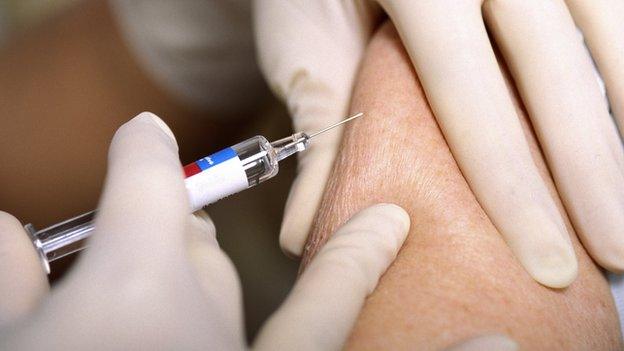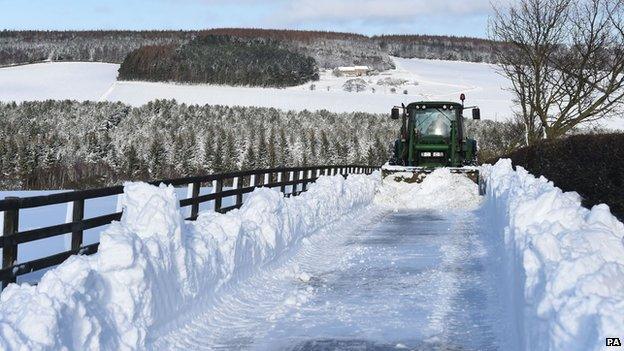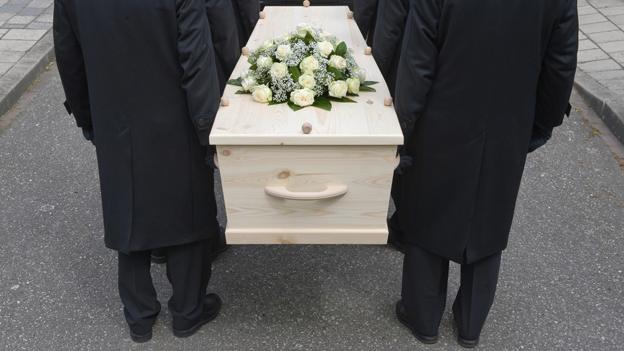Death rate up by a third in January
- Published

Doctors are spending more time dealing with flu than last year
The current death rate in England and Wales is running about one-third higher than its normal rate for this time of year, official statistics show.
In the two weeks ending on 23 January, 28,000 people died, the Office for National Statistics figures show, external.
Over the previous five years, the average number of deaths for the same period stood at about 21,000.
Experts say flu could be the driving force, although the precise causes will not be known for some time.
Prof John Newton, chief knowledge officer at Public Health England (PHE), which monitors death rates, said there had been a substantial increase in the numbers since Christmas.
Although it was less apparent from the raw data, PHE's own analysis, external has found that - even taking the season into account - deaths among elderly people have now been significantly elevated for six weeks.
The death rate has risen by 3,700 people a week since early December. Of that more than 3,000 are accounted for by over-75s.
The usual key causes of excess winter deaths are cold weather, influenza and gastrointestinal infection.
Estimating exactly which has done what, however, will take some time.
'Flu season'
There is evidence, however, that flu may be a crucial driver of this year's elevated deaths.
According to PHE statistics, both GPs and hospitals are spending much more time dealing with flu than they did last year, despite a similar vaccination rate among the key target groups.
Furthermore, the H3N2 sub-type - a prevalent flu virus at the moment - takes a particular strain on elderly people.
An important role for this virus is therefore consistent with a higher death rate among the elderly, who have been encouraged to get vaccinated.

This year, the proportion of vulnerable people who were vaccinated was the same as last year.
Prof Newton said PHE tries to anticipate sub-types of the virus that will be circulating to ensure it can be vaccinated against.
"This year, it is the right type," he said.
"But there can be [mutation] so that the circulating type might not be as well matched at the end of the flu season as it was at the beginning."
Failure of health care?
One explanation that senior civil servants in the Department of Health have suggested is that the death rate may also be higher because of last year's mild winter.
An unusually large number of frail people may have survived last year, but are succumbing to the flu and cold this year.
The forces that are driving the higher death rates would certainly have contributed to the problems facing A&E units, which have struggled under their heavy case loads.
But Prof Newton said the problems both in A&Es and social care are unlikely to have contributed materially to the higher death rates, noting the chronology of the surge.
"People might think perhaps that some of these deaths are the result of a failure of health care or social care. There's very little evidence of that," he added.
- Published28 November 2014

- Published11 January 2014
